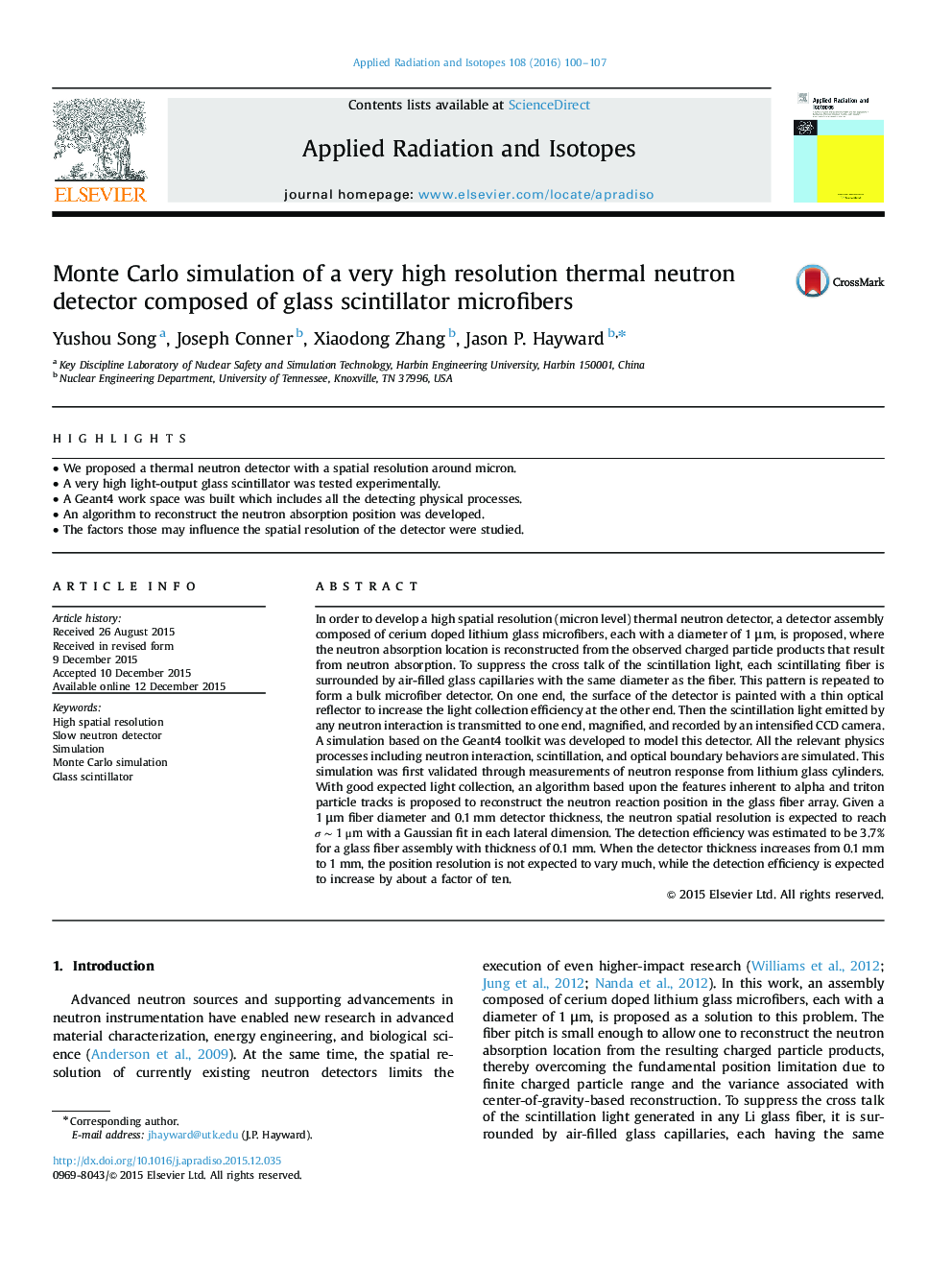| کد مقاله | کد نشریه | سال انتشار | مقاله انگلیسی | نسخه تمام متن |
|---|---|---|---|---|
| 1877496 | 1532089 | 2016 | 8 صفحه PDF | دانلود رایگان |
• We proposed a thermal neutron detector with a spatial resolution around micron.
• A very high light-output glass scintillator was tested experimentally.
• A Geant4 work space was built which includes all the detecting physical processes.
• An algorithm to reconstruct the neutron absorption position was developed.
• The factors those may influence the spatial resolution of the detector were studied.
In order to develop a high spatial resolution (micron level) thermal neutron detector, a detector assembly composed of cerium doped lithium glass microfibers, each with a diameter of 1 μm, is proposed, where the neutron absorption location is reconstructed from the observed charged particle products that result from neutron absorption. To suppress the cross talk of the scintillation light, each scintillating fiber is surrounded by air-filled glass capillaries with the same diameter as the fiber. This pattern is repeated to form a bulk microfiber detector. On one end, the surface of the detector is painted with a thin optical reflector to increase the light collection efficiency at the other end. Then the scintillation light emitted by any neutron interaction is transmitted to one end, magnified, and recorded by an intensified CCD camera. A simulation based on the Geant4 toolkit was developed to model this detector. All the relevant physics processes including neutron interaction, scintillation, and optical boundary behaviors are simulated. This simulation was first validated through measurements of neutron response from lithium glass cylinders. With good expected light collection, an algorithm based upon the features inherent to alpha and triton particle tracks is proposed to reconstruct the neutron reaction position in the glass fiber array. Given a 1 μm fiber diameter and 0.1 mm detector thickness, the neutron spatial resolution is expected to reach σ∼1μm with a Gaussian fit in each lateral dimension. The detection efficiency was estimated to be 3.7% for a glass fiber assembly with thickness of 0.1 mm. When the detector thickness increases from 0.1 mm to 1 mm, the position resolution is not expected to vary much, while the detection efficiency is expected to increase by about a factor of ten.
Journal: Applied Radiation and Isotopes - Volume 108, February 2016, Pages 100–107
